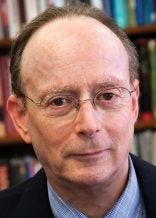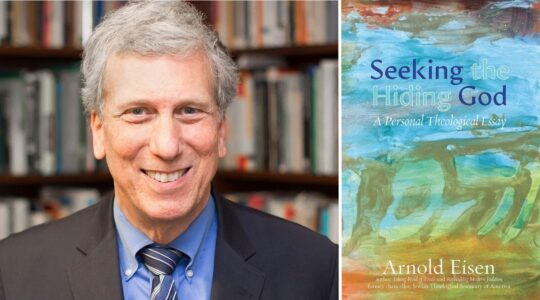Waltham, Mass. — The last national Jewish population study, done in 2000-2001, was pretty much a disaster.
Sponsored by the North American federation movement — then known as United Jewish Communities and now Jewish Federations of North America (JFNA) — the extensive $6 million survey was plagued by cost over-runs, lost data and disagreements among various experts in the field over its methodology and the validity of its conclusions, including the number of Jews in America.
Partly as a result of that experience, for the first time since the Jewish community started these approximately once-a-decade national reports in the mid-1950s, there is no plan for another National Jewish Population Study (NJPS), whose findings would normally be released now, on the eve of JFNA’s annual General Assembly.
The leading researchers in this specialized field are perceived as a contentious bunch who often critique each other’s work publicly. But they seem to agree that the decision by JFNA not to commission a new national survey is a shame, and a setback to those planning communal policy or engaged in academic research.
Sidney Goldstein, the acknowledged pioneer and dean in the field of Jewish demography, said this week that it was “irresponsible” for JFNA not to undertake a national Jewish population study.
Goldstein, of Brown University and now retired, made his remarks at a two-day conference this week hosted by the Steinhardt Social Research Institute and Cohen Center for Modern Jewish Studies at Brandeis University here. It brought together for the first time several dozen of the leading demographers and sociologists in the Jewish field, as well as others interested more generally in religion and culture, to discuss at length the implications of not having an accurate gauge on whether American Jews are continuing to identify religiously and/or ethnically with the faith.
Sergio DellaPergola of the Hebrew University in Jerusalem said the fact that there is no national study planned is itself “a powerful statement,” which seemed to suggest that the JFNA’s role as the central body of the organized Jewish community has diminished, beset by internal issues and eclipsed by family foundations in the support of Jewish education and other causes.
There was a sense in the room that some in the organized community underestimate the value the research can provide.
In an interview, Jerry Silverman, the CEO of JFNA, who was not at the conference, said much of the blame for the lack of another national Jewish study belongs to the Jewish demographers whose public sniping about the methodology of past studies undermined the work.
“Debate is healthy” up to a point, Silverman said, but when it is driven by “egos,” and “inhibits” communal action, it goes too far.
“If there was to be another NJPS, mah nishtana?” Silverman asked; why would this study be different from previous ones publicly criticized by the Jewish social scientists?
He intimated that if and when JFNA undertakes another national study, it might go outside the Jewish community to hire those who would direct it.
Support the New York Jewish Week
Our nonprofit newsroom depends on readers like you. Make a donation now to support independent Jewish journalism in New York.
Practical Outcomes
In tracing the impact of past national studies, the conference participants agreed that the 1990 study — for all its controversy over whether the intermarriage rate was indeed as high as 52 percent, as cited — led to a communal emphasis on continuity programs, outreach, day schools, camping and other forms of Jewish education to offset assimilation.
But the experts in the room were hard-pressed to come up with any practical outcome from the beleaguered 2000 study, which found that the community declined to 5.2 million Jews — from 5.5 million in 1990 — and that the intermarriage rate had risen slightly.
(One person sitting near me whispered that the only positive result of the 2000 survey was that the community decided to disband the NJPS.)
Leonard Saxe, a leading social psychologist at Brandeis who organized and hosted this week’s conference, noted that one of the reasons the 2000 study lacked impact was because experts weren’t comfortable with the findings. He cited, for example, its statistic that 29 percent of American Jewish youngsters attended day schools, which he said was much too high.
“Anomalies like that left us scratching our heads,” he said.
Joining the chorus of those bemoaning the lack of plans for a new national study, Alan Cooperman, associate director of research for the Pew Forum on Religion and Public Life, used the Yiddish word for scandal, saying “it’s a shanda we don’t have good trend data on Jews in America.”
He noted that Pew has conducted studies of other small religious groups in the U.S., including Muslims. “There’s no reason we shouldn’t be able to do it,” he said.
But during the course of the first day of discussions, amid technical talk of algorithms, coefficients and indexes of dissimilarity, the participants cited a litany of reasons why undertaking a national study now is so challenging.
First, there is the fact that the cost has gone up while Jewish organizations are cutting back during difficult economic times, and a national study may be viewed by some as a luxury rather than a necessity. In addition, telephone surveys, at a time when 30 percent of all U.S. households are cellphone-only, are increasingly seen as inaccurate and outdated. Then there is the matter of determining what is most important to ask and interpreting data when the very definition of who is a Jew is a source of controversy.
“One person’s Jew is another’s gentile,” observed Barry Kosmin, a veteran demographer who teaches at Trinity College in Hartford, Conn. He noted that “methodology, analysis, theory and policy are intertwined” in these studies.
A number of federations are sponsoring studies of their own Jewish communities. New York, for example, plans to release its findings of an extensive survey, the first of its kind in a decade, next spring.
Support the New York Jewish Week
Our nonprofit newsroom depends on readers like you. Make a donation now to support independent Jewish journalism in New York.
Benjamin Philips, senior analyst/project director at Abt SRBI, suggested ways that studies could be done more cheaply, and emphasized that the national survey should be done more frequently and less exhaustively. He and his colleague, Leonard Saxe, believe the emphasis should be more on discerning new trends in Jewish identity and behavior rather than confirming past history.
Saxe has come up with and employs a different approach to the national survey, eschewing costly phone calling (only about one in 50 who answer are Jewish) and focusing on synthesizing data from more than 150 existing nationwide studies conducted by the government, other agencies and national polling organizations.
According to his research, there are about 6.4 million Jews in the U.S., far more than the NJPS 2000 number and an increase of almost 20 percent since 1990. But he says he is less interested in hard numbers than with “the demographic
characteristics of Jews,” how they act as Jews, or not, and why.
Some of his colleagues say they would like to see more details of the work and methodology before drawing conclusions.
‘High-Quality Research’
On Monday, Saxe hailed the two-day conference as a success and predicted that the leaders in the field will be able to put aside their differences and come up with new forms of collaboration. He said he believes they will reach “a consensus about size and population [of the American Jewish community] and the qualities of what it means to call yourself Jewish.”
Saxe said if the JFNA undertook a “high-quality research study, and not just one to validate what you already know,” there would be no sniping from the Jewish demographers and academics in the field.
Apprised of the statement, Silverman, the CEO of JFNA, responded: “By whose definition of ‘high quality’?”
Silverman left the door open to the possibility of JFNA undertaking another national study in the future, saying his organization has had “very preliminary” discussions with potential investors and others who have done studies, with an eye toward doing “what’s best for the community.” He also said JFNA is examining closely the methods and results of the various local community surveys.
“The biggest question [for a national study] is where the Jews are” in terms of “migration and influx,” as well as “where they are Jewishly or not Jewishly,” Silverman said, adding: “We need to look at other alternative routes,” including possibly engaging demographers outside the small and specialized Jewish field who have “incredible credibility, and who the community may have a hard time challenging.”
He said there is a need for surveys to “help us make great decisions, and be an enabler, and not spend our time reliving the past.
“The question isn’t why hasn’t [the national study] been done, but how can we work together?”
Support the New York Jewish Week
Our nonprofit newsroom depends on readers like you. Make a donation now to support independent Jewish journalism in New York.
So the challenge goes both ways, with the Jewish demography experts calling for a national study with excellent research, and the top Jewish communal official suggesting his group may need to go outside the Jewish field to find it.
In the meantime, American Jewry continues to change dramatically, and the existing data, a decade old and inconclusive, becomes more irrelevant with each passing day.
Gary@jewishweek.org
The New York Jewish Week brings you the stories behind the headlines, keeping you connected to Jewish life in New York. Help sustain the reporting you trust by donating today.





